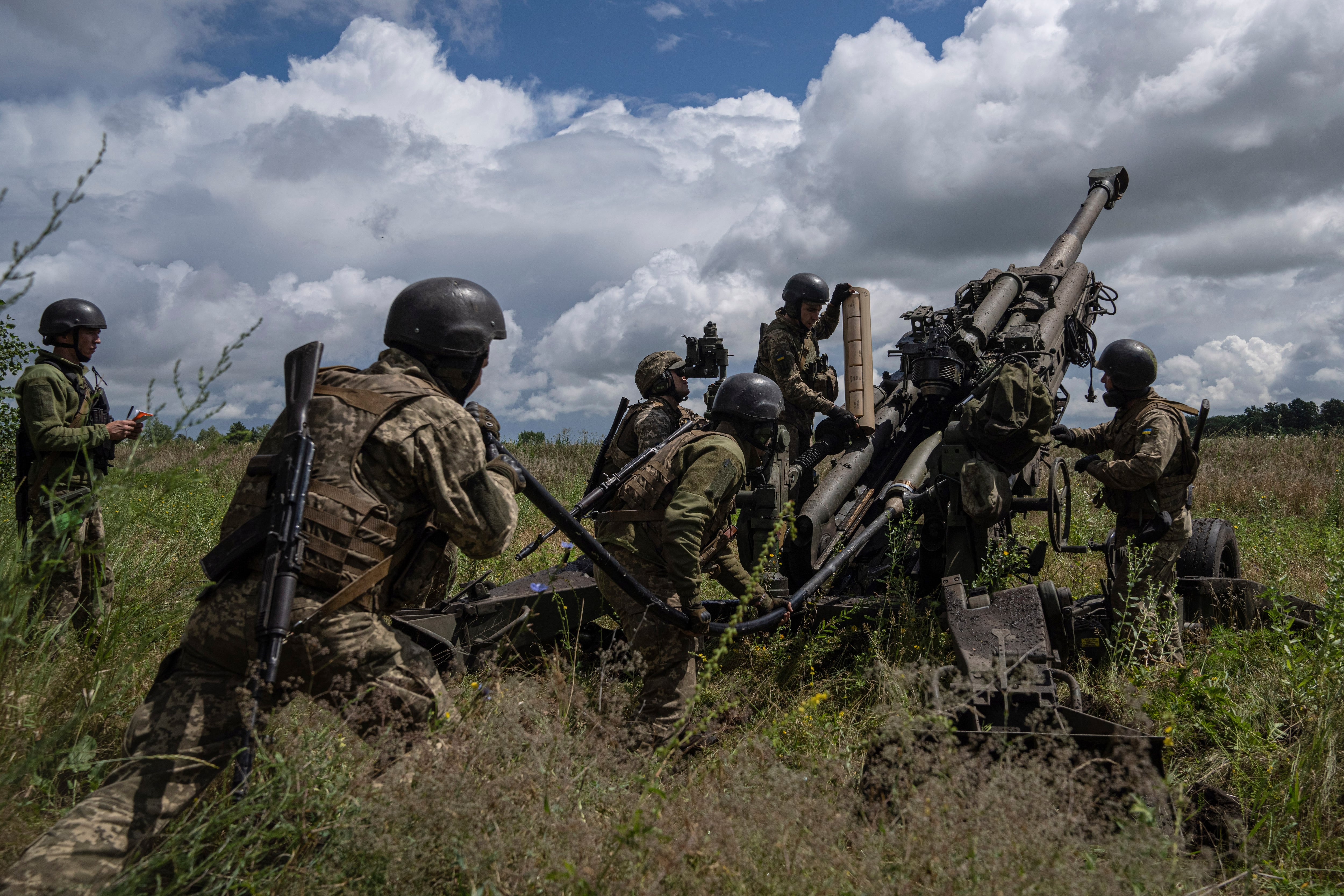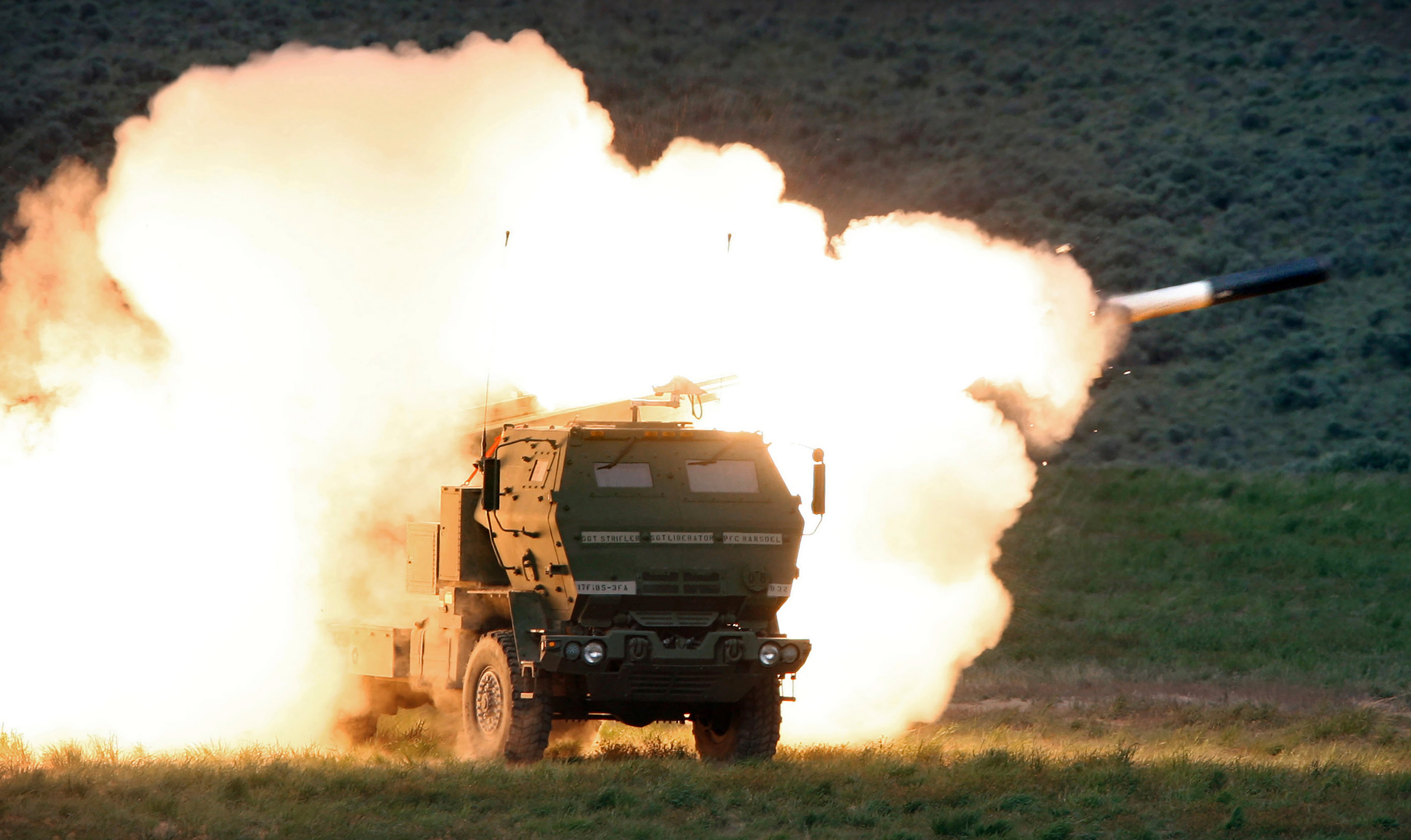WASHINGTON ― The U.S. military in recent weeks awarded Lockheed Martin $179 million to replace High Mobility Artillery Rocket Systems and Guided Multiple Launch Rocket Systems it sent from its own stockpiles to Ukraine, according to Pentagon data set to be released on Wednesday.
News of the spending, which is part of $3.4 billion in Ukraine-related contracting actions for arms and equipment since the start of the Russia-Ukraine war eight months ago, coincided with Lockheed’s disclosure Tuesday that it’s increasing HIMARS and GMLRS production by nearly 60 percent.
The systems have become a key tool in Ukraine’s ability to strike bridges that Russia has used to supply its troops, enabling Ukrainian forces to make inroads in Russia-controlled regions.
The replacement contracting actions include $95 million in August and September for HIMARS, which has played a pivotal role in Ukraine’s counter-offensive against Russian troops in the east and south, and $84 million in September for the GPS-guided GMLRS rockets, which have a range of more than 80 kilometers.
Because of the way the Pentagon presents the information, it’s unclear how much of the funding is to buy new systems and how much includes investments in the industrial base to expand or accelerate production throughput. The contracts are not expected to yield immediate deliveries.
“Replacement contracts are expected to deliver over multiple years, as many capabilities delivered to Ukraine, such as advanced munitions, have two- to three-year production times,” the Pentagon says in its fact sheet.
Lockheed is set to ramp up HIMARS production to 96 launchers annually, from its current level of 60, the firm’s chief executive, Jim Taiclet said during a third-quarter earnings call Tuesday.
Lockheed invested $65 million to buy parts in advance, an expense the government is expected to pay back, in order to speed up production, Taiclet said. The company anticipated demand for HIMARS and other products in Europe, which is arming up in the wake of Russia’s invasion.
“That was without a contract or any other memo or whatnot back from the government,” Taiclet said of the investment. “We just went ahead and did that because we expected it to happen. So those parts are already being manufactured now.”
RELATED

The Pentagon announced this month it would soon be delivering four more HIMARS to Ukraine, bringing the total number sent to 20. Weeks earlier, it announced plans to buy 18 of the weapons for Ukraine through longer-term contracts funded by Ukraine Security Assistance Initiative.
“We really believe that the most critical requirement for Ukraine right now is the GMLRS munitions that can reach most of the targets that they have identified within Ukrainian territory. And we’ve seen that they’re using them to great effect,” Deputy Under Secretary of Defense for Policy Sasha Baker told reporters at the time.
In late August, the undersecretary of defense for acquisition and sustainment, Bill LaPlante, and the Army’s chief weapons buyer, Doug Bush, visited Lockheed’s HIMARS and GMLRS plant in Camden, Arkansas. LaPlante announced plans for the Pentagon to spend $200 million to expand and accelerate HIMARS and GMLRS production.
Bush told Defense News this month that the Army is looking to “dramatically ramp up quickly” the production line for GMLRS, and that it was one of the systems the Pentagon would like to see produced at double or triple its current rate.
Though in 2018 the Army scaled back the quantities of GLRS it was ordering, Bush said the production line remained “pretty warm” and “much easier to ramp up” than if the line had stopped entirely.
Washington is working to expand defense industry capacity in the wake of the war. Lawmakers have introduced bipartisan legislation in the Senate that would grant the Pentagon fast-track procurement powers, and U.S. Defense Secretary Lloyd Austin in Brussels last week pushed to galvanize allied defense industrial bases “to fire up production for the systems to defend Ukraine, even while meeting our own security needs.”
Maintaining ample levels of the GMLRS ammunition is key concern for the U.S. military, as is boosting the capacity to produce a range of munitions, said Bradley Bowman, the senior director of the Center on Military and Political Power at the Foundation for the Defense of Democracies, a Washington-based nonpartisan think tank.
“I really think we’re confronting a U.S. munition production capacity crisis because for too long we procured things at the minimum rate, just to keep production lines going ― and now we’re paying the piper,” Bowman said. “Surge capacity is not there, and we need to be procuring enough to arm our own forces and ensure their readiness while providing Ukraine and Taiwan with what they need.”
Jen Judson contributed to this report.
Joe Gould was the senior Pentagon reporter for Defense News, covering the intersection of national security policy, politics and the defense industry. He had previously served as Congress reporter.





